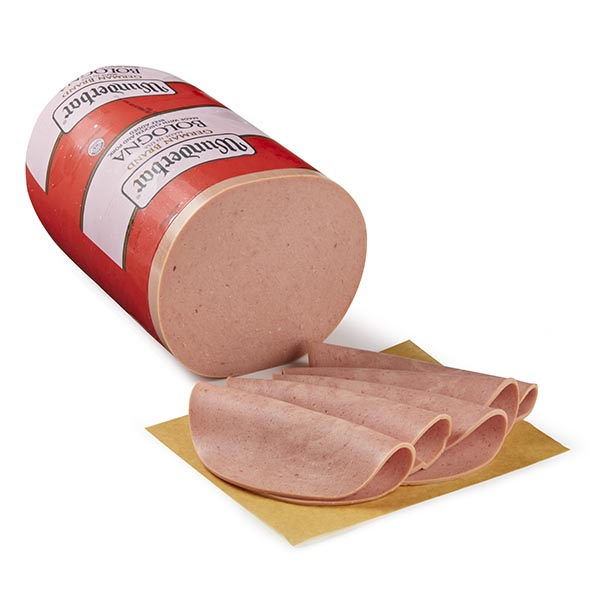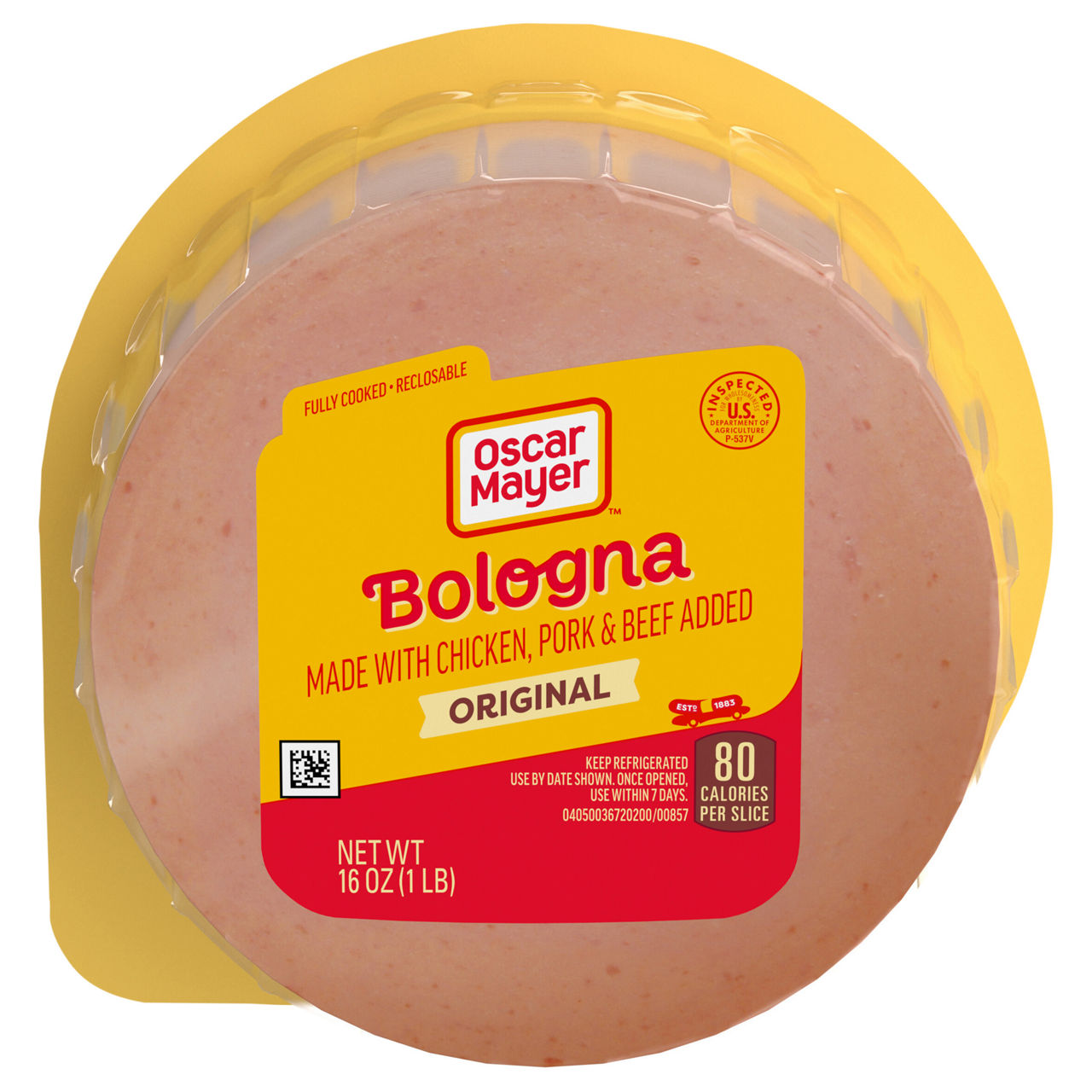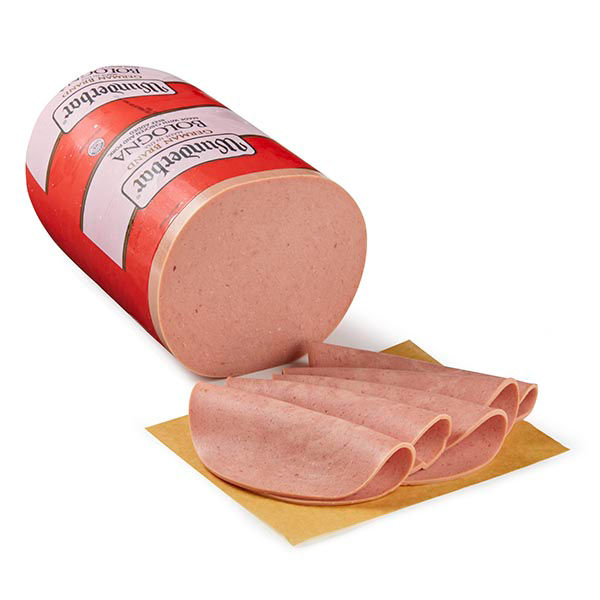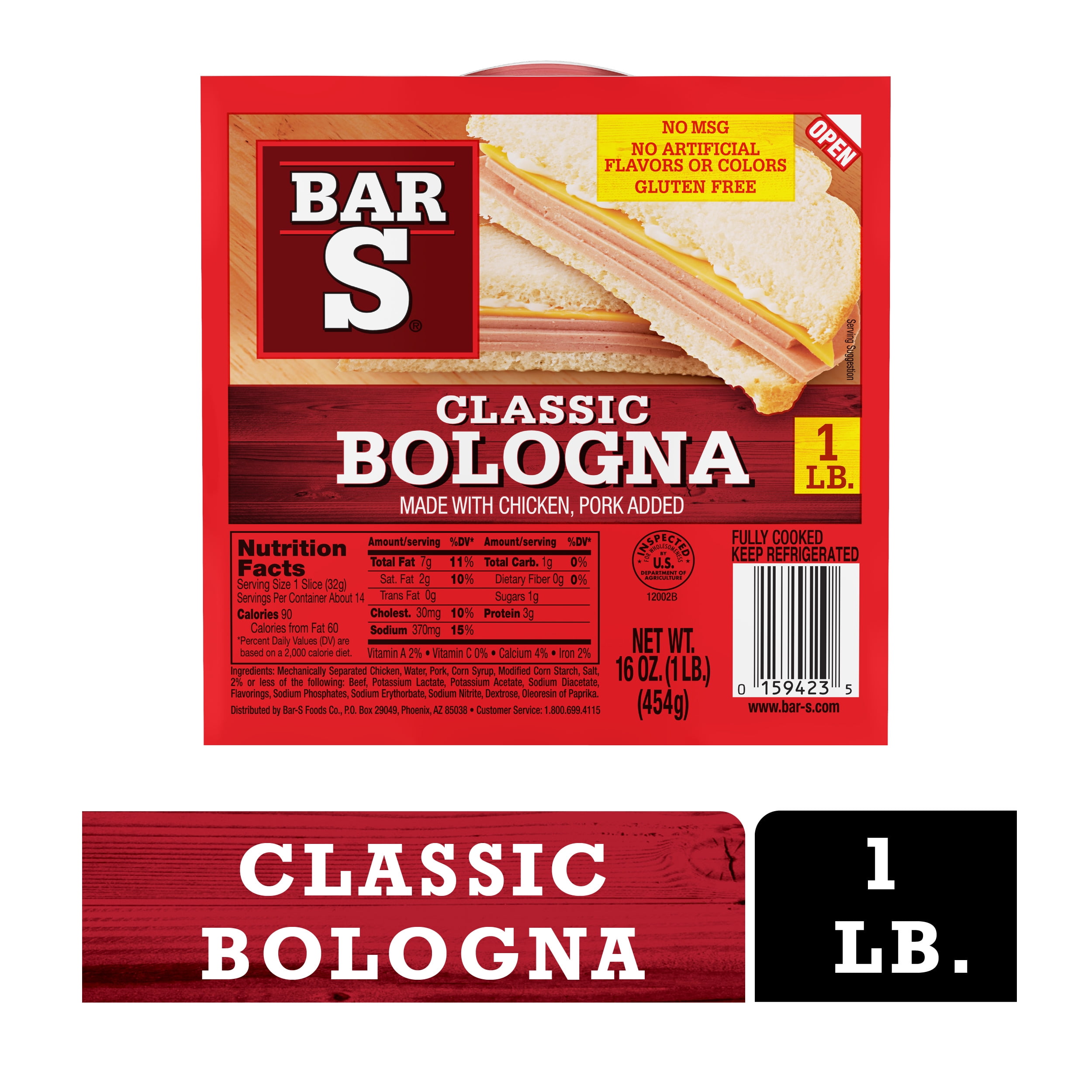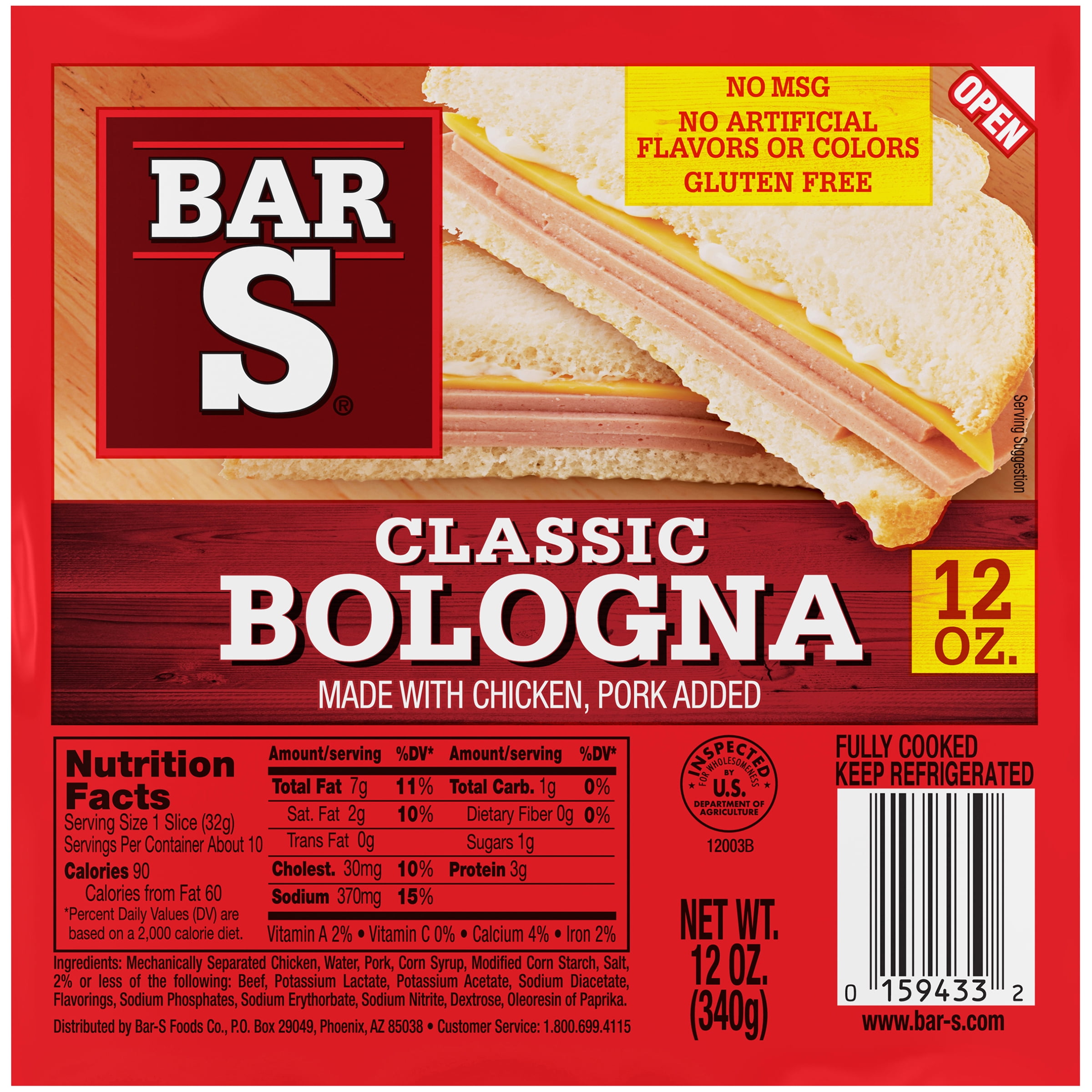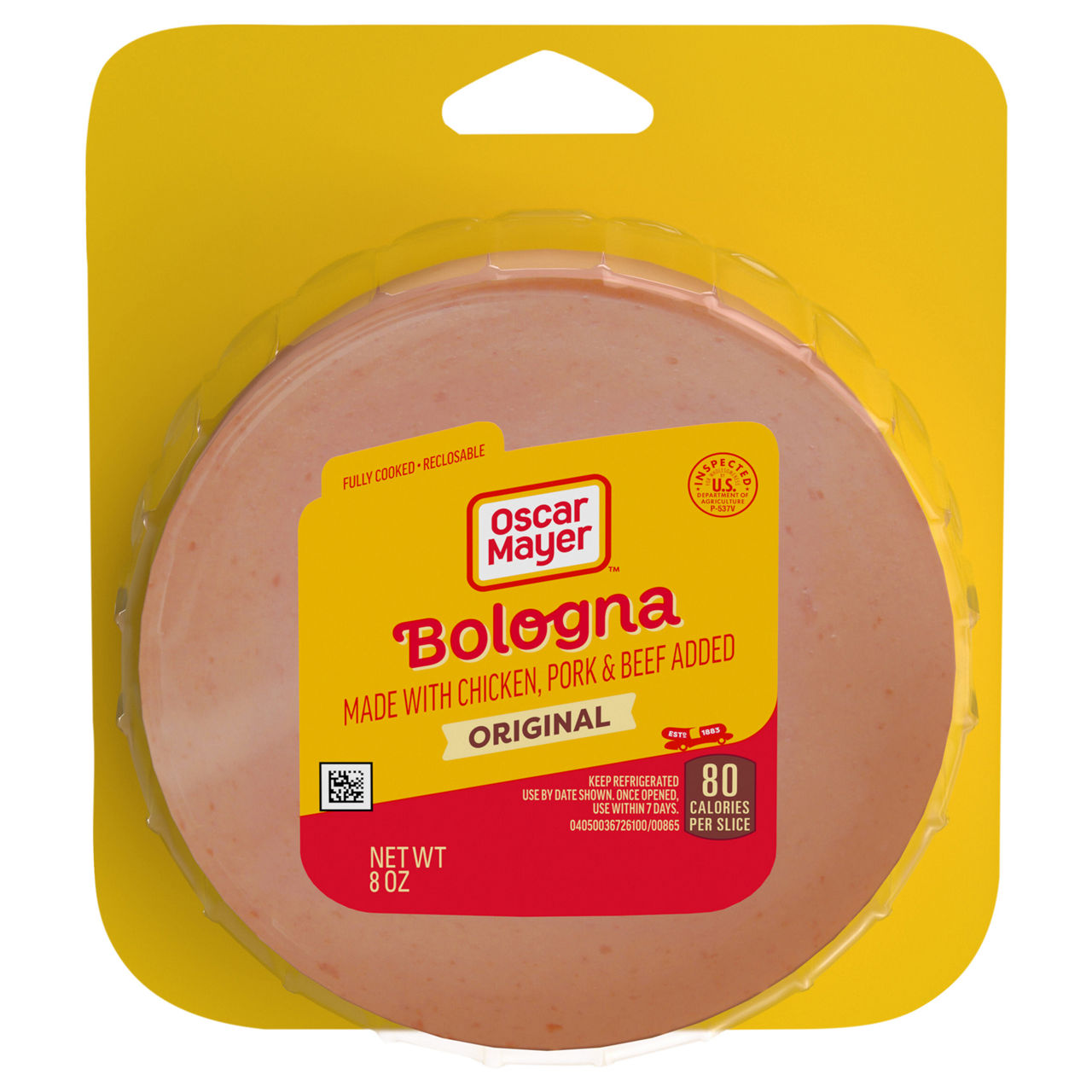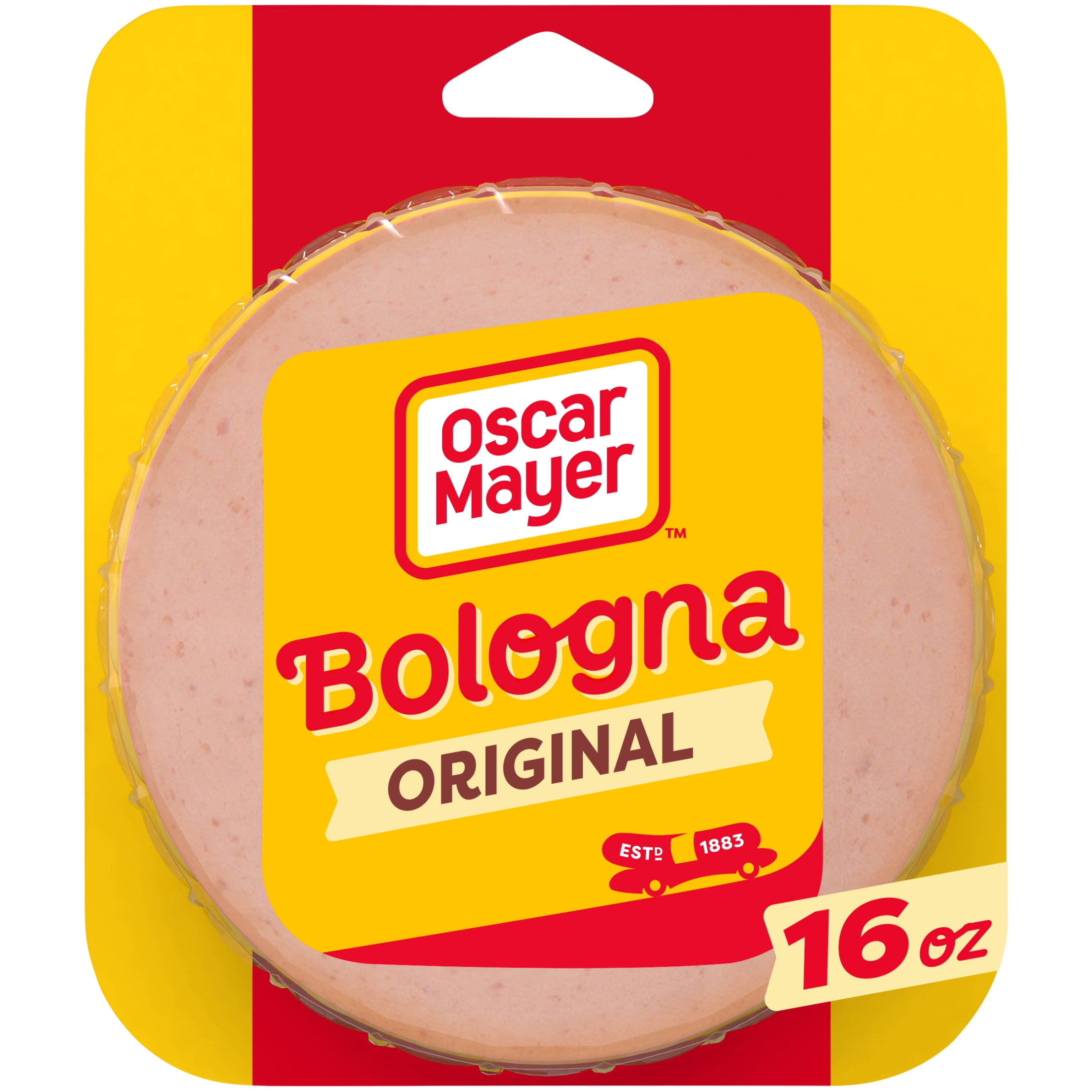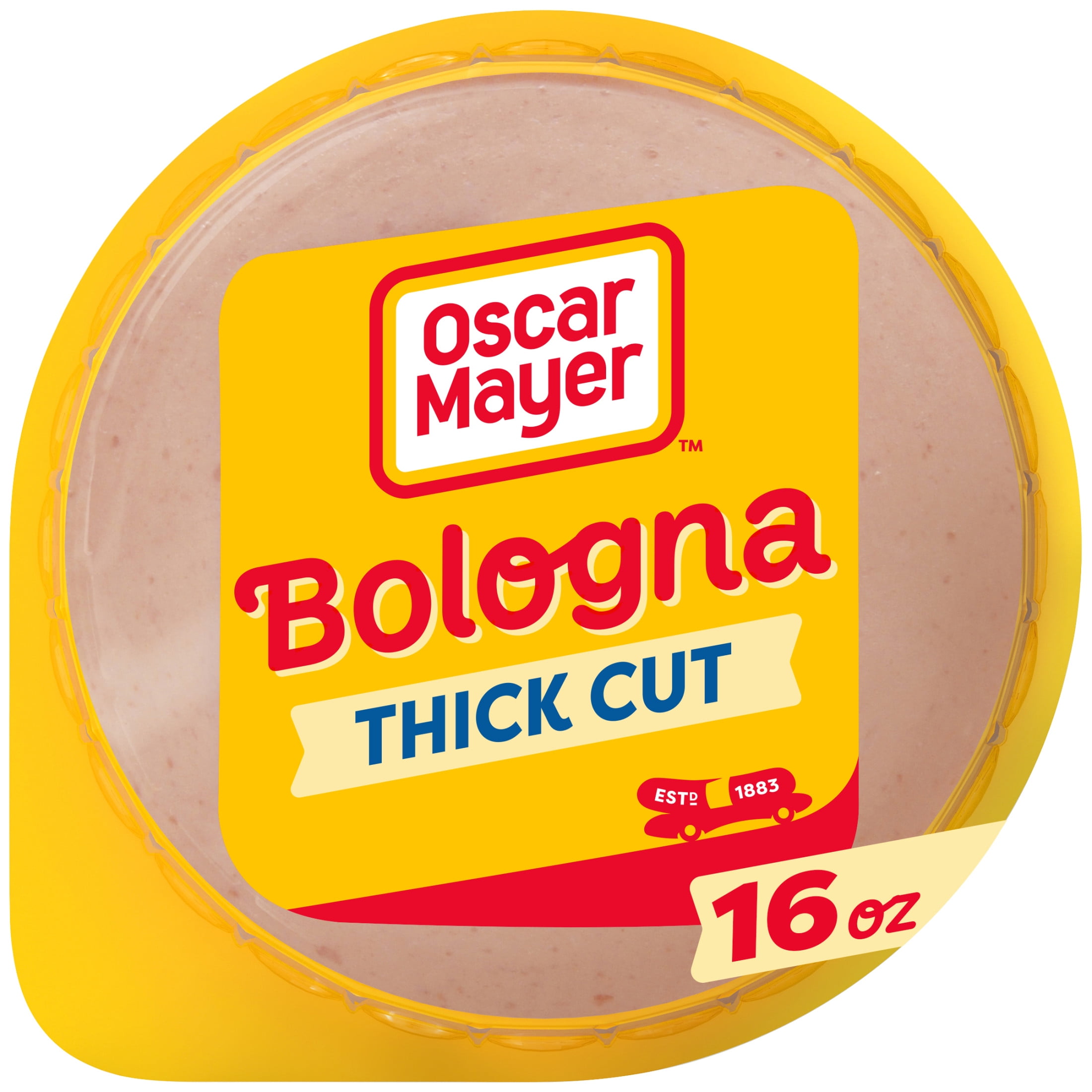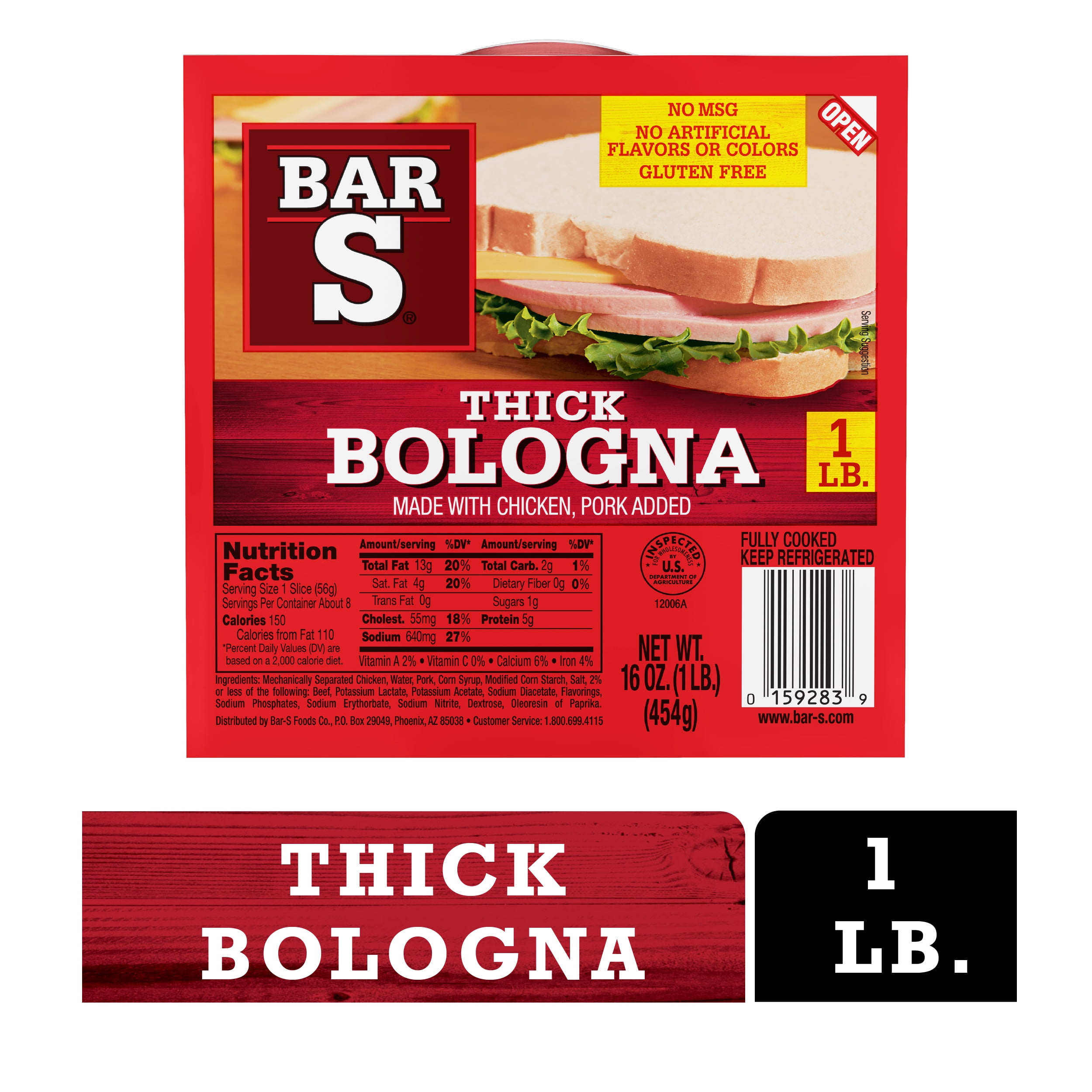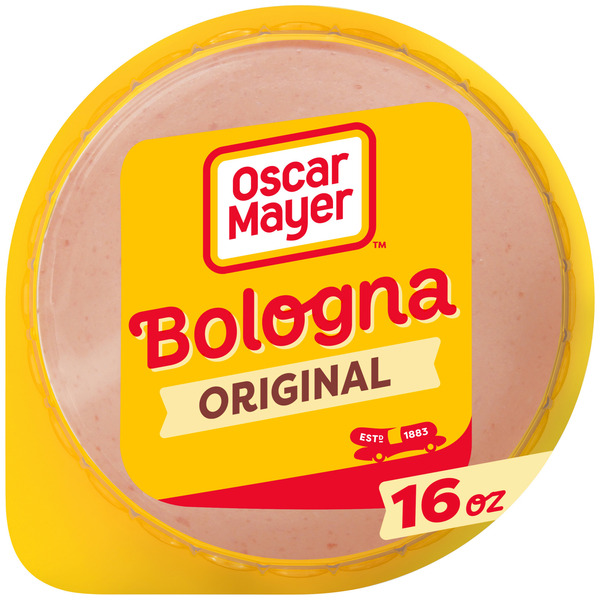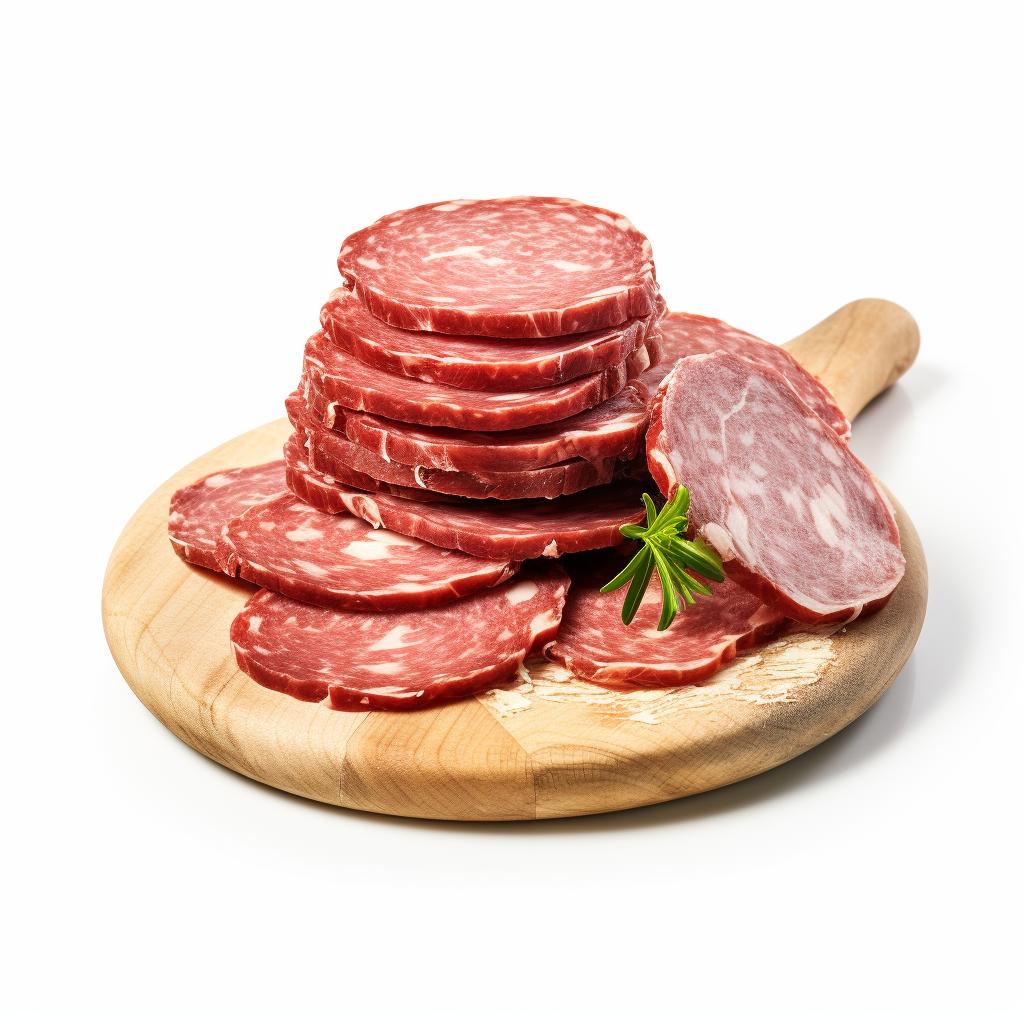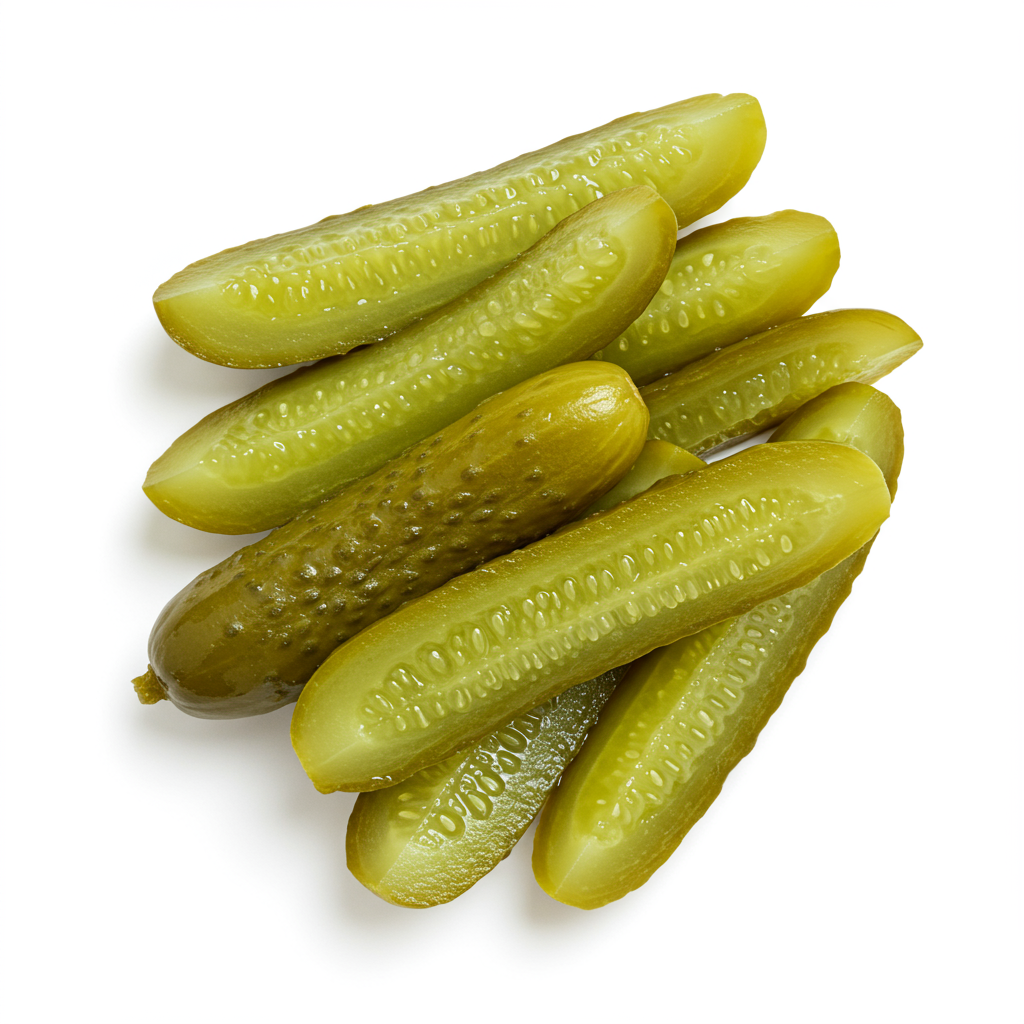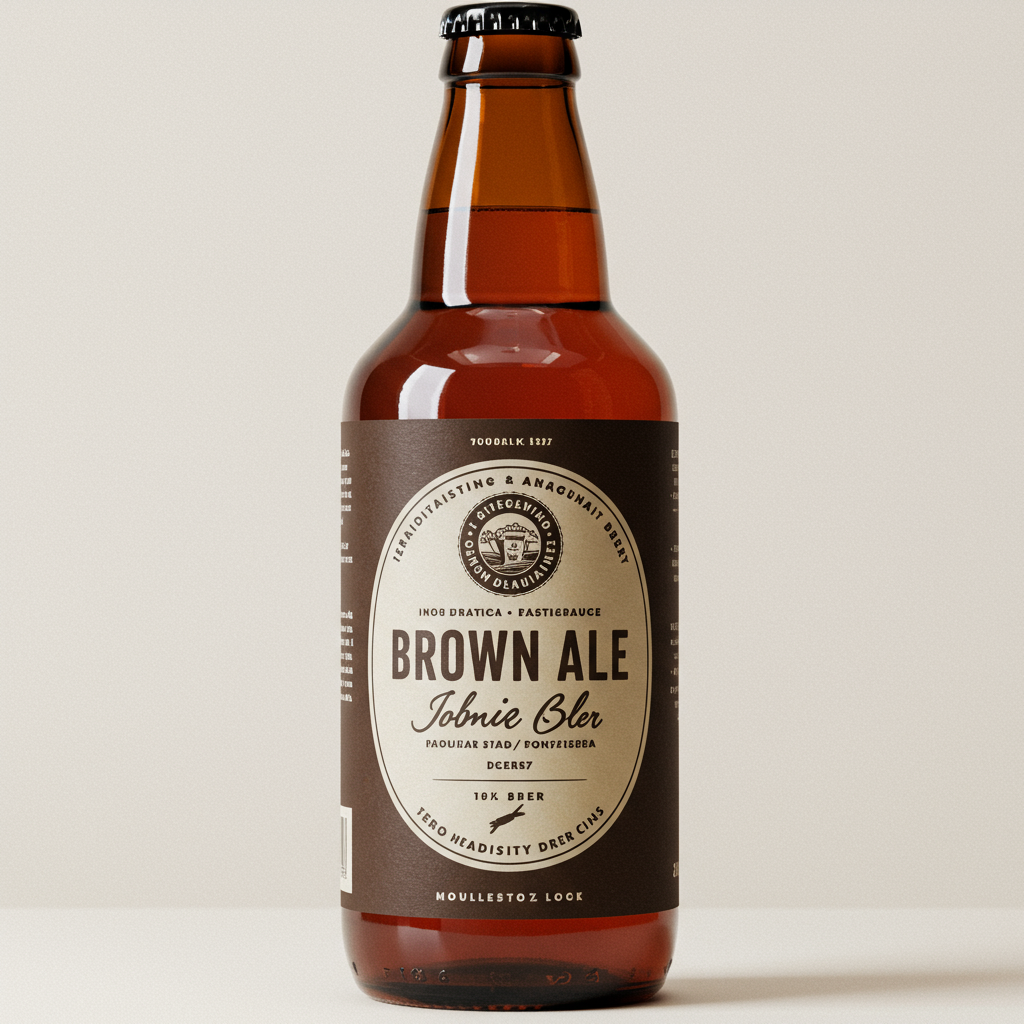LUNCH
APPETIZERS
SNACKS
Bologna
Bologna is a versatile and popular type of sausage, known for its distinctive taste, smooth texture, and pinkish color. Traditionally made from a combination of pork and beef, modern versions may also include chicken or turkey as the primary source of protein. This widely-consumed deli meat has its origins in Bologna, Italy, and has become a staple in many American households.
Typically served as a cold cut in sandwiches or as a snack, bologna is often enjoyed with various condiments such as mustard, mayonnaise, and cheese. Available in pre-sliced or unsliced forms, bologna can be pan-fried, grilled, or microwaved for added flavor and versatility in recipes.
12%
CARBS
54%
FAT
34%
PROTEIN
1,066 Bologna Products
Russer Wunderbar German Brand Bologna
Oscar Mayer Bologna Deli Lunch Meat
Russer Wunderbar German Brand Bologna
Bar-S Classic Bologna Sliced Deli-Style Lunch Meat, 14 Slices per Package
Bar-S Classic Bologna Sliced Deli-Style Lunch Meat
Oscar Mayer Bologna Made With Chicken & Pork, Beef Added Sliced Lunch Meat
Oscar Mayer Bologna Made With Chicken & Pork, Beef Added Sliced Lunch Meat
Oscar Mayer Thick Cut Bologna Sliced Lunch Meat
Bar-S Thick Bologna Sliced Deli-Style Lunch Meat, 8 Slices per Package
Oscar Mayer Bologna Sliced Lunchmeat
Bologna Is Frequently Used With
Bologna FAQ
While bologna is not considered gourmet by any means, it is a beloved staple in many sandwiches and comfort food recipes. It's easy to work with, but people frequently encounter challenges when trying to use it creatively in dishes beyond sandwiches. Overcooking is another common pitfall people fall into, either by frying or grilling for too long, which can result in a tough or rubbery texture.
To fully capitalize on bologna's potential, try using it in a variety of dishes apart from sandwiches, like in pasta or salads for added flavor and protein. You can also add a new layer of flavor by incorporating seasonings and herbs as it pairs well with a variety of flavors. Another tip is to score the bologna lightly before frying to ensure even cooking and make it crispier.
One little-known fact about bologna is that its casing can often be eaten - it's just a matter of personal preference. It’s generally safe, although some people find it tough or disagreeable.
Can I eat bologna raw?
What can I make with bologna apart from sandwiches?
Should I remove the casing of bologna?
Why does my fried bologna curl up?
How long should I fry bologna?
Is bologna healthy?
Can I grill bologna?
What condiments go well with bologna?
Can I use bologna to make a casserole?
What are some herbs and spices that go well with bologna?
Expiration & Storage Tips
When does bologna expire?
Bologna is an often processed food, and its shelf life will greatly depend on how it's stored. Here are some general guidelines:
Unopened: An unopened package of bologna can typically last up to two weeks in the fridge past the printed date on the package.
Once it's been opened: Once open, bologna should be eaten within three to five days.
Frozen: If frozen correctly, bologna can last up to two months in the freezer without significant decrease in quality.
How do you tell if bologna is bad?
The first sign bologna has gone bad is its smell. If it smells sour or like ammonia, throw it out. In some cases, slime might build up on the lunch meat - which is another sure sign it has spoiled. Do not taste it if you suspect it might be bad, as this could lead to food poisoning.
Also look out for a change in color. While certain lighting can make bologna look slightly more grey or brown, if the entire surface has changed color, it's not safe to eat.
Tips for storing bologna to extend shelf life
• Always refrigerate bologna. It should be kept at or below 40°F (4°C) to slow down bacterial growth.
• Use an airtight container or a zip-lock bag to store opened bologna in the fridge to reduce the exposure to air and bacteria.
• For long-term storage, freeze bologna. Place the slices in a freezer-safe bag, press out any excess air, seal tightly, then freeze.
• When defrosting frozen bologna, place it in the refrigerator overnight. To avoid moisture loss, don't defrost by microwaving or using warm water.
EXPIRES WITHIN
7 - 10
WEEKS
Health Info
Macros
1g
CARBS
6g
FAT
4g
PROTEIN
Allowed on these diets
LOW FAT
HIGH CALCIUM
KETO
LOW CARB
LACTOSE FREE
GLUTEN FREE

